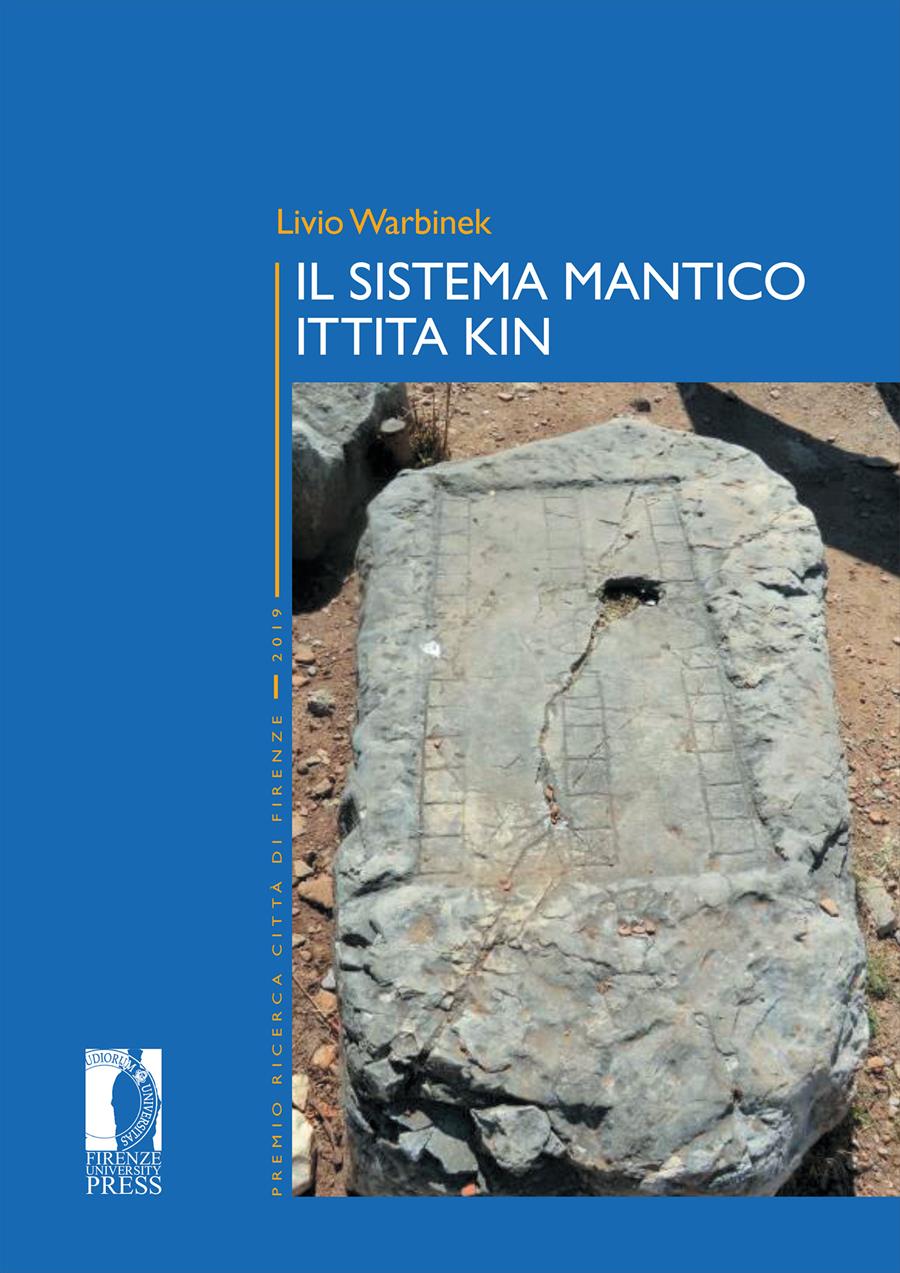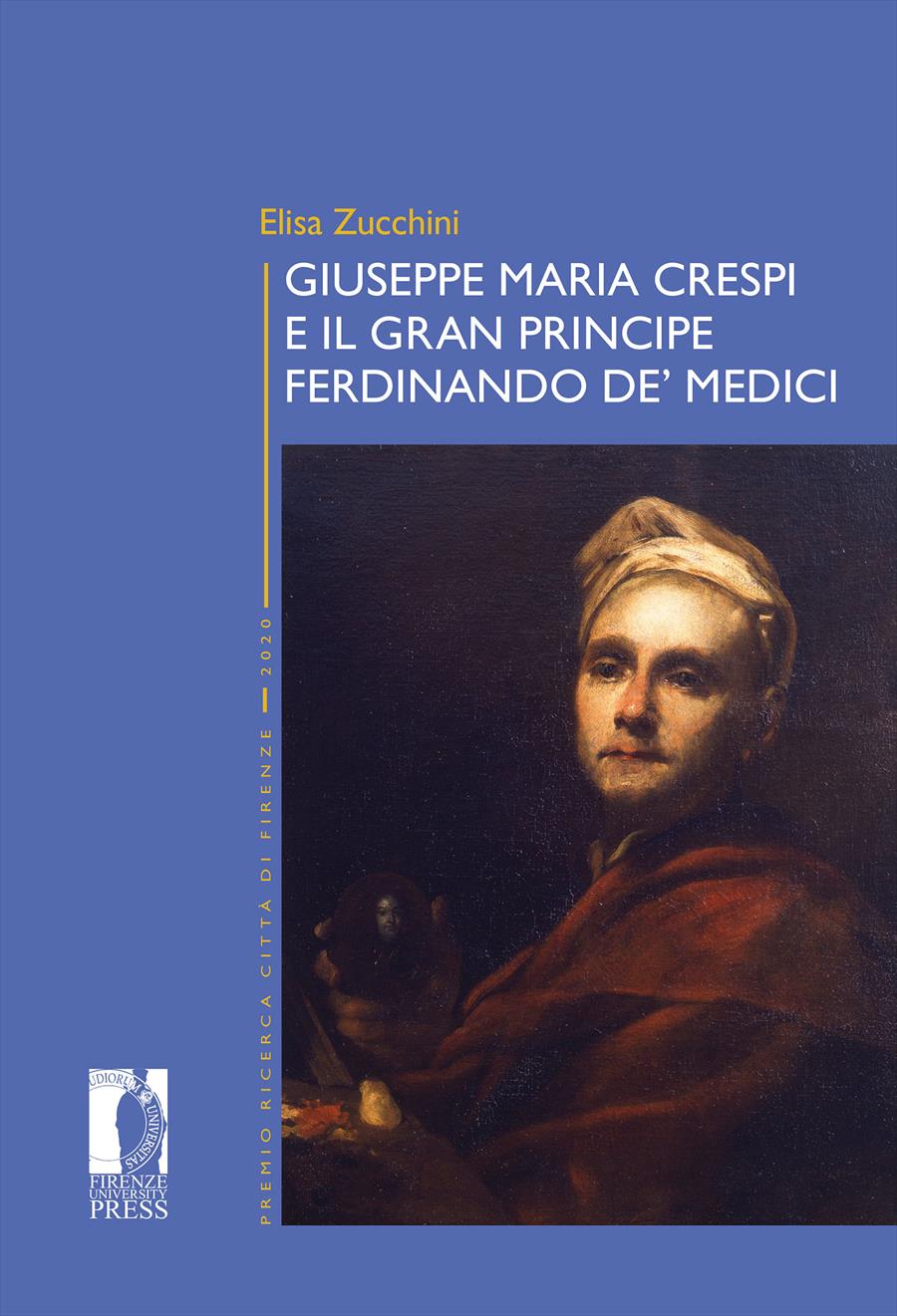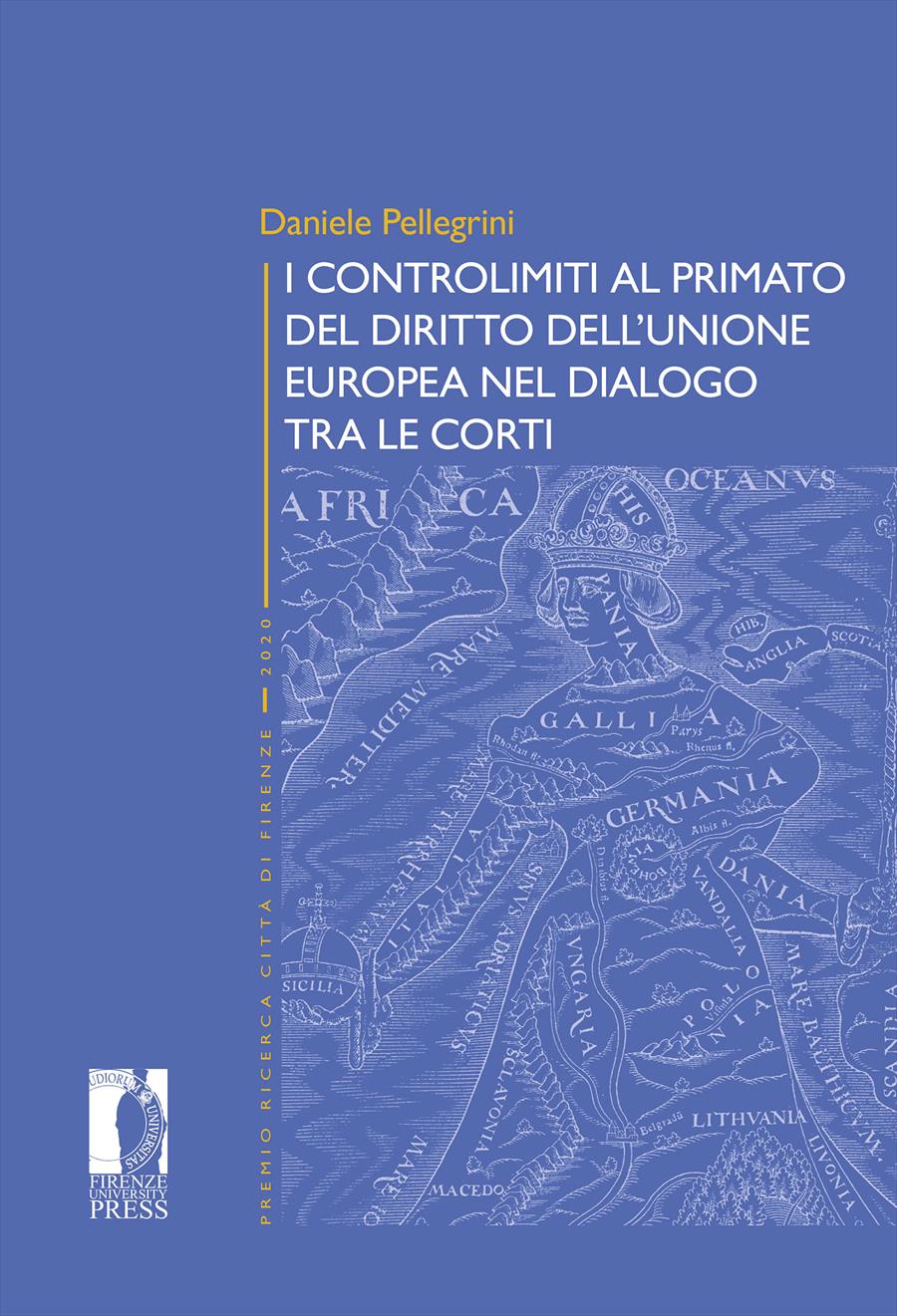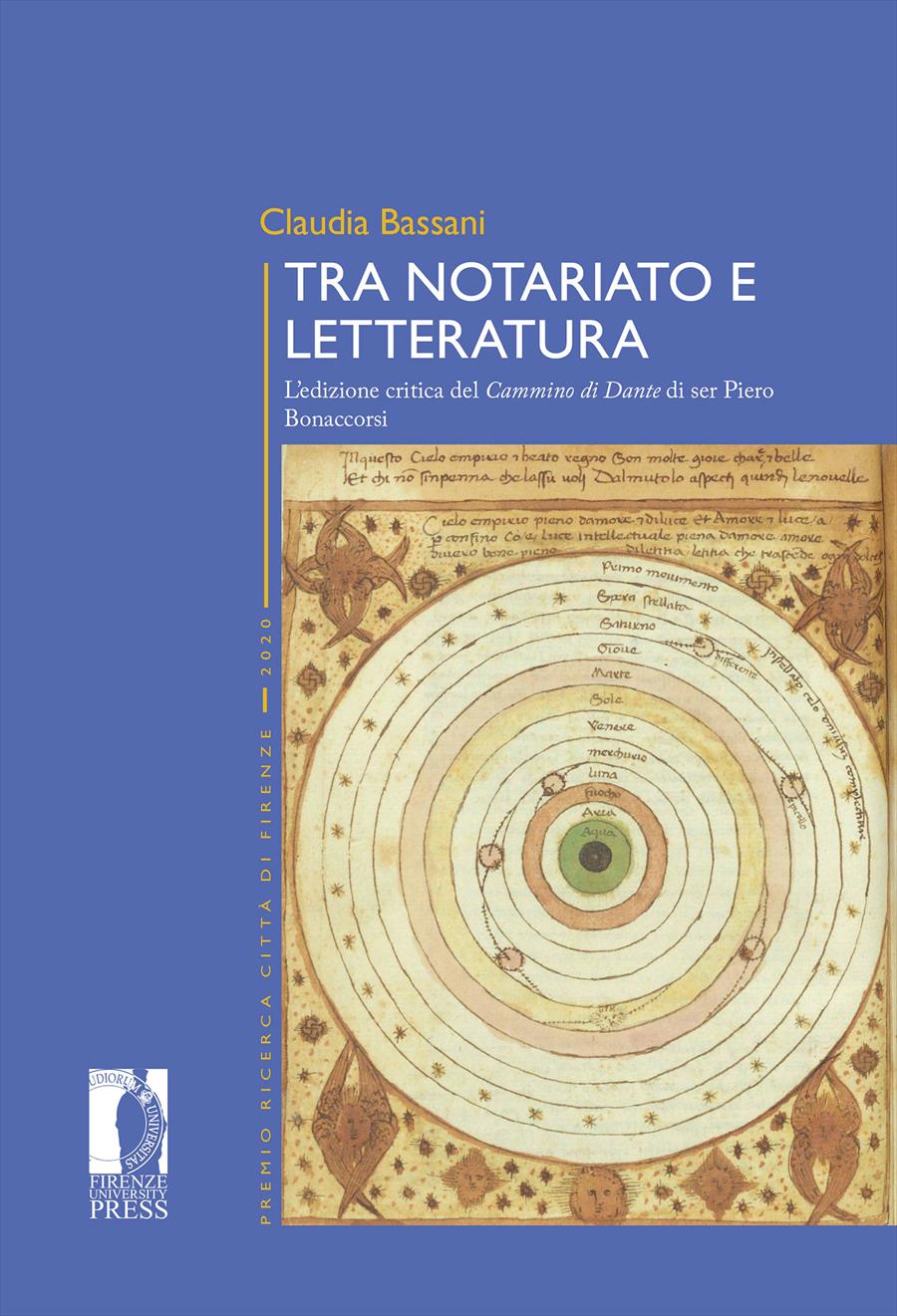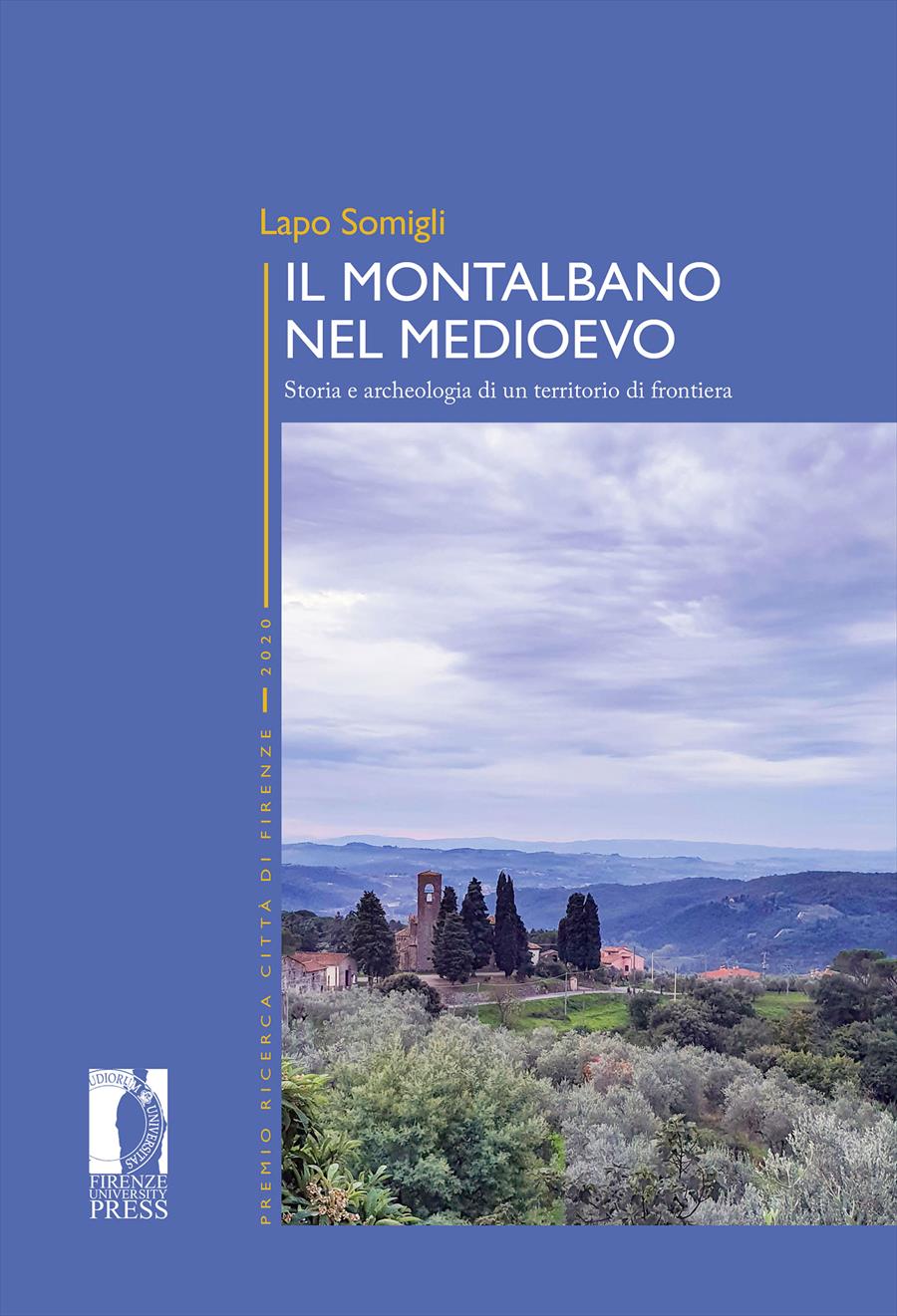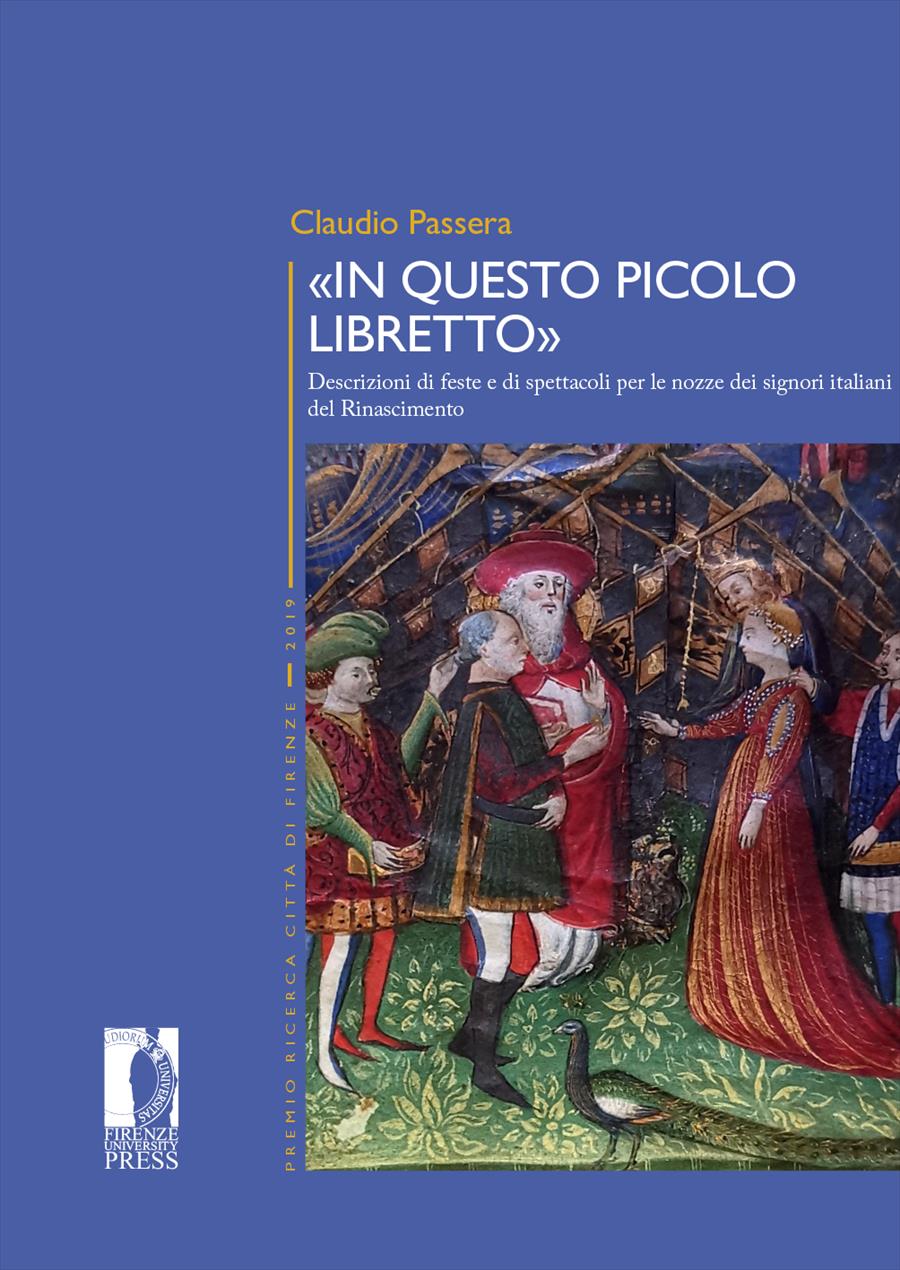Il sistema mantico ittita KIN
- Livio Warbinek,
The present dissertation is concerned with the KIN oracle, a symbolic divination technique produced by the Hittite in the 2nd mill. B.C. and developed only in the Hittite cultural milieu. Like other omens of the Ancient Near East, the Hittite oracles were considered to be messages from the gods. The Hittite solicited omens included Extispicy, Augury, the Bed Oracle, the ḪURRI-Bird Oracle, the Snake Oracle, and the KIN Oracle. Although many studies have already explained how the different divination systems worked, the KIN oracle frame still remains difficult to understand in all of its features. In this research the KIN cuneiform sources and its oracular structure have been analyzed in all respects and enriched with tables, patterns, and pictures in order to better understand the work carried out. As far as the KIN is concerned, this research provides several different analytic implications both for Hittite and divination studies.
- Keywords:
- Hittite,
- oracle,
- KIN,
- symbolic oracle,
- DOI: 10.36253/978-88-5518-114-3
- Series: Premio Ricerca «Città di Firenze»
- Scientific Board
- Language: Italian
- Subjects: History of Asia History of Eastern Asia
University of Verona, Italy - ORCID: 0000-0002-5472-9177
- AA. VV. (1997), Der Neue Pauly. Enzyklopädie der Antike. Altertum. Band 3, Metzler, Weimar
- Akdoğan, R. (2010), Hethitische Texte in Transkription. Ankara Arkeoloji Müzesinde Bulunan Boğazköy Tableteri II, Harrassowitz, Wiesbaden
- Alaura, S. (1998), Die Identifizierung der im “Gebäude E” von Büyükkale-Boğazköy gefundenen Ton-tafelfragmente aus der Grabung von 1933, «Altorientalische Forschungen», 25, 193-214
- Alaura, S. (2001), Archive und Bibliotheken in Ḫattuša in Wilhelm, G., Akten des IV. Internationalen Kongresses für Hethitologie Würzburg, 4.-8. Oktober 1999, Harrassowitz, Wiesbaden: 12-26
- Archi, A. (1966), Trono regale e trono divinizzato nell’Anatolia ittita, «Studi Micenei ed Egeo-Anatolici», 1, 76-120
- Archi, A. (1974), Il sistema KIN della divinazione ittita, «Oriens Antiquus», 13, 112-144
- Archi, A. (1975), L'ornitomanzia ittita, «Studi Micenei ed Egeo-Anatolici», 16, 119-180
- Archi, A. (1979), Il dio Zawalli. Sul culto dei morti presso gli Ittiti, «Altorientalische Forschungen», 2, 81-94
- Archi, A. (1980), Rev.: Heinhold-Krahmer, S., Arzawa, 1977, «Studi Micenei ed Egeo-Anatolici», 22, 353-355
- Archi, A. (1982), Hethitsche Mantik und ihre Bezeihungen zur mesopotamischen Mantik in Nissen, H., Renger, J., Mesopotamien und seine Nachbarn. Politische und kultuelle Wechselbziehungen im Alten Vorderasien vom 4. bis 1. Jahrtausend v. Chr., Dietrich Rei
- Archi, A. (1991), Die hethitische Orakeltexte in Klengel, H., Sundermann, W., Ägypten–Vorderasien–Turfan, Probleme der Edition und Bearbeitung altorientalischer Handschriften, Akademie Verlag, Berlin: 85-90.
- Archi, A. (2003), The Anatolian Fate-Goddesses and their Different Traditions in Cancik-Kirschbaum E., Klinger J., Müller G.W., Diversity and Standardization. Perspectives on social and political norms in the ancient Near East, Akademie Verlag, Berlin: 1-
- Archi, A. (2019), How a God of Nature became a Tutelary God of the King in Süel, A., Acts Of e IXth International Congress of Hititology, Çorum, September 08-14, 2014, Dumat Ofset, Ankara: 49-63
- Archi, A. et Alii (2015), Epigraphic Findings, in Mazzoni, S., Pecchioli Daddi, F., The Uşaklı Höyük Survey Project (2008-2012), Firenze University Press, Firenze: 349-363
- Archi, A., Klegnel, H. (1980), Ein hethitischer Text über die Reorganisation des Kultes, «Altorientalische Forschungen», 7, 143-157
- Asher-Greve, J.M. (1987), The oldest female oneiromancer in Durand, J.-M., La femme dans le proche-orient antique, Editions Recherche sur les Civilisations, Paris: 27-32
- Bayun, L.S. (2000), Divination in Ancient Near East. II. Hittite MUŠ Oracles, «Vestnik Drevnej Istorii», 233, 63-72
- Beal, R.H. (1988), The GIŠ TUKUL-institution in Second Millennium Ḫatti, «Altorientalische Forschungen», 15, 269-305
- Beal, R.H. (1992), Rev.: Rüster, C., Neu, E., Hethitischen Zeichenlexikon, Wiesbaden, 1989, «Journal of the American Oriental Society», 112, 127-129
- Beal, R.H. (1999), Seeking Divine Approval for Campaign Strategy – KUB 5.1 + KUB 52.65, «Ktèma», 24, 41-54
- Beal, R.H. (2001), Hittite Oracles in Ciraolo, L., Seidel, J., Magic and Divination in the Ancient World. Ancient Magic and Divination II, Brill, Boston: 57-81
- Beal, R.H. (2002), Gleanings from Hittite Oracle Questions on Religion, Society, Psychology and decision making in Taracha, P., Silva Anatolica. Anatolian Studies Presented to Maciej Popko on the Occasion of His 65th Birthday, Agade, Warsaw: 11-37
- Beal, R.H. (2003), Assuring the Safety of the King during the Winter (1.79), «the Context of Scripture», 1, 207-211
- Beal, R.H., Collins, B.J. (1996), Hittite pankur, a new suggestion, «Altorientalische Forschungen», 23, 308-315
- Beckman, G.M. (1983), Hittite Birth Rituals. Second Revised Edition, Harrassowitz, Wiesbaden
- Beckman, G.M. (1985), Rev.: Archi, A., KUB 52, Berlin, 1983, «Bibliotheca Orientalis», 42, 138-142
- Beckman, G.M. (1993), From Cradle to Grave: Women’s Role in Hittite Medicine and Magic, «Journal of Ancient Civilisations», 8, 25-39
- Beckman, G.M. (1996), Hittite Diplomatic Texts, Society of Biblical Literature, Atlanta
- Beckman, G.M. (1999), The Tongue is a Bridge: Communication between Humans and Gods in Hittite Anatolia, «Archiv Orientální», 67, 519-534
- Beckman, G.M. (2000), Edicts and Proclamations: Bilingual Edict of Hattusili I, «the Context of Scripture», 2, 79-81
- Beckman, G.M. (2010), On Hittite Dreams in Singer, I., Luwian and Hittite Studies presented to J. David Hawkins on the Occasion of his 70th Birthday, Emery and Claire Yass Publications in Archaeology, Tel Aviv: 26-31
- Beckman, G.M. (2013), Under the Spell of Babylon: Mesopotamian Influence on the Religion of the Hittites in Aruz, J., et Alii, Cultures in Contact – From Mesopotamia to the Mediterranean in the Second Millennium B.C., Symposia, New York: 284-297
- Beckman, G.M. (2016), The Old Woman: Female Wisdom as a Resource and a Threat in Hittite Anatolia in Velhartická, Š., Audias fabulas veteres. Anatolian Studies in Honor of Jana Součková-Siegelová, Brill, Leiden-Boston: 48-57
- Beckman, G.M. et Alii (2011), The Ahhiyawa Texts, Society of Biblical Literature, Atlanta
- Beckman, G.M., Hoffner, H.A.Jr. (1985), Hittite Fragments in American Collections, «Journal of Cuneiform Studies», 37, 1-60
- Benedetti, B. (1980), Nota sulla sal ŠU.GI ittita, «Mesopotamia», 15, 98-108
- Berman, H. (1982), Critical Reviews, «Journal of Cuneiform Studies», 34, 118-126
- Bir-Nun, S.R. (1975), The Tawananna in the Hittite Kingdom, Winter, Heidelberg
- Bottéro, J. (1982), L’Oniromancie en Mésopotamie ancienne, «Ktèma», 7, 5-18
- Bryce, R. (2005), The Kingdom of the Hittites. New Edition, Oxford University Press, Oxford
- Buchholz, L. (2013), Identifying the Oracular sortes of Italy in Kajava, M., Studies in ancient oracles and divination, Institutum Romanum Finlandiae, Roma: 111-144
- Burde, C. (1974), Hethitische medizinische Texte, Harrassowitz, Wiesbaden
- Cammarosano, M. (2010), Tanuḫepa: a Hittite Queen in Troubled Times, «Mesopotamia», 45, 47-64
- Cammarosano, M. et Alii (2019), They wrote on wax. Wax boards in the Ancient Near East, «Mesopotamia», 64, 121-180
- Cammarosano, M., Marizza, M. (2015), Das Land Tumanna und sein König in den hethitischen Quellen, «Welt des Orients», 45, 158-192
- Carruba, O. (1988), Stato e società nel Medio Regno eteo in AA.VV., Stato, Economia, Lavoro nel Vicino Oriente antico, Angeli, Milano: 195-224
- Catsanicos, J. (1994), La mise à jour du système de transcription des textes hittites, «Indogermanische Forschungen», 99, 301-335
- Collins, B.J. (2005), A Statue for the Deity: Cult Images in Hittite Anatolia in Walls, N.H., Cult Image and Divine Representation in the Ancient Near East, American Schools of Oriental Research, Atlanta: 13-42
- Collins, B.J. (2016), Women in Hittite Religion in Budin, S.L., Turfa, J.M., Women in Antiquity. Real women across the Ancient World, Routledge, London-New York: 329-341
- Cornelius, F. (1962), Zur hethitischen Landeskunde, «Bibliotheca Orientalis», 21, 11-15
- Cornil, P. (1990), Liste des Noms Géographiques des Textes Hittites. KBo XXIII-XXX, XXXIII, KUB XLV-LVII, «Hethitica», 10, 7-108
- Corti, C. (2010), The History of the Exploration of Uşaklı/Kuşaklı Höyük and the “Rediscovery” of a Middle-Hittite Tablet, «Colloquium Anatolicum», 9, 193-212
- Cotticelli-Kurras, P. (2012), Integrazione lessicale e categorie morfologiche dei prestiti luvi in ittito, «Studia Mediterranea», 24, 79-86
- Crasso, D. (2005), Ankuwa in Hittite Written Sources: Preliminary Observations, «Kaskal», 2, 147-158
- Crasso, D. (2008), The location of Ankuwa and the geographic connections with the Hittite Capital and the neighbouring towns, «Eothen», 16, 87-129
- Czichon, R.M. (1997), Studien zur Regionalgeschichte von Ḫattuša/Boğazköy 1996, «Mitteilungen der Deutschen Orient-Gesellschaft zu Berlin», 129, 89-102
- Dardano, P. (2002), ‘La main est coupable’, ‘le sang devient abondant’: sur quelques expressions avec des noms de parties et d’éléments du corps humain dans la littérature juridico-politique de l’Ancien et du Moyen Royaume hittite, «Orientalia. Nova Serie
- Dardano, P. (2009), Per l'etimo dall'ittito maškan-, «Res antiquae», 6, 3-12
- Dardano, P. (2014), Das hethitische Partizip – eine Frage der Diathese? in Taracha, P., Proceedings of the 8th International Congress of Hittitology, Warsaw, September 5–9, 2011, Agade, Warsaw: 236-262
- Dardano, P. (2018), Zur Subjektmarkierung im Hethitischen: syntaktische und semantische Fragen in Rieken, E., Geupel, U., Roth, Th.M., 100 Jahre Entzifferung des Hethitischen. Morphosyntaktische Kategorien in Sprachgeschichte und Forschung. Akten der Arbe
- Dinçol, A.M., et Alii (1993), The ‘Cruciform Seal’ from Boğazköy-Ḫattuša, «Istanbuler Mitteilungen», 43, 87-106
- Durand ,J.-M. (1998), Archives Royales de Mari XXVI. Archives épistolaires de Mari I/1, Éditions Recherche sur le Civilisations, Paris
- Edinow, E. (2014), Oracles and Oracle-Sellers. An Ancient Market in Futures in Engles, D., van Nuffelen, P., Religion and Competition in Antiquity, Latomus, Brussels: 55-95
- Fincke, J.C. (2014), Divination im Alten Orient: Ein Überblick in Fincke, J.C., Divination in the Ancient Near East, Eisenbrauns, Winona Lake: 1-20
- Francia, R. (2002), Le funzioni sintattiche degli elementi avverbiali di luogo ittiti, Herder, Roma
- Francia, R. (2015), Archivi e biblioteche a Hattusa: alcune riflessioni in Asero, E., Strade di Uomini e Idee, Aracne, Roma: 33-44
- Frantz-Szabó, G. (1995), Hittite Witchcraft, Magic, and Divination in Sasson, J.M., Civilizations of the Ancient Near East III, Macmillan, New York: 2007-2019
- Frantz-Szabó, G. (1997), Muttergöttin. A. II. In Anatolien, «Reallexikon der Assyriologie», 8, 516-519
- Freu, J., Mazoyer, M. (2008), L’apogée du Nouvel Empire Hittite. Les Hittites et leur historie, L'Harmattan, Paris
- Friedrich, J. (1950), Churritische Märchen und Sagen in hethitischer Sprache, «Zeitschrift für Assyriologie», 49, 211-255
- Gander, M. (2010), Die geographischen Beziehungen der Lukka-Länder, Winter, Heidelberg
- Gessel van, B.H.L. (1998), Onomasticon of the Hittite Pantheon Part I-II, Brill, Leiden-Boston-Köln
- Gessel van, B.H.L. (2001), Onomasticon of the Hittite Pantheon, Volume 3: Part Three, Brill, Leiden-Boston-Köln
- Gilan, A. (2015), Formen und Inhalte althethitischer historischer Literatur, Winter, Heidelberg
- Giorgieri, M. (1995), Testi ittiti di giuramento, Diss., Università degli Studi di Firenze
- Giorgieri, M., Mora, C. (2010), Kingship in Ḫatti during the 13th Century: Forms of Rule and Struggles for Power before the Fall of the Empire in Cohen, Y., Gilan, A., Miller, J.L., Pax Hethitica: Studies on the Hittites and their Neighbours in Honour of
- Goedegebuure, P.M. (2006), A New Proposal for the Reading of the Hittite Numeral ‘1’: šia- in van den Hout, Th. P.J., The Life and Times of Ḫattušili III and Tutḫaliya IV -Proceedings of a Symposioum held in Honour of J. De Roos, 12-13 December 2003 Leide
- Goedegebuure, P.M. (2008), Central Anatolian Languages and Language Communities in the Colony Period: A Luwian-Hattian Symbiosis and the Independent Hittites in Derksen, J., Anatolia and the Jazira During the Old Assyrian Period, Peeters, Leiden: 137-180
- Goedegebuure, P.M. (2010), Deictic-emphatic -i and the Anatolian Demonstratives in Kim, R. et Alii, Ex Anatolia Lux. Anatolian and Indo-European studies in honor of H. Craig Melchert on the occasion of his sixty-fifth birthday, Beech Stave, New York: 55-
- Goedegebuure, P.M. (2014), The Hittite Demonstratives: Studies in Deixis, Topics and Focus, Harrassowitz, Wiesbaden
- Gordin, S. (2015), Hittite Scribal Circles. Scholarly Tradition and Writing Habits, Harrassowitz, Wiesbaden
- Görke, S. (2007), Das Ritual der Aštu (CTH 490) zwischen Tradition und kultureller Neurung in Archi, A., Francia, R., VI Congresso Internazionale di Ittitologia, Roma, 5-9 settembre 2005, CNR, Roma: 339-345
- Görke, S. (2010), Das Ritual der Aštu (CTH 490). Rekonstruktion und Tradition eines hurritisch-hethitischen Rituals aus Boğazköy/Ḫattuša, Brill, Leiden-Boston
- Götze, A. (1957), Kleinasien, 2. Neubearbeitete Auflage, Beck, München
- Groddek, D., et Alii (2006), Hethitische Texte in Transkription. VS NF 12, TU Dresden, Dresden
- Gurney, O.R. (1977), Some Aspects of Hittite Religion, Oxford University Press, Oxford
- Gurney, O.R. (1981), The Babylonians and Hittites in Loewe, M., Blacker, C., Divination and Oracles, Shambhala, London: 142-173
- Güterbock, H.G. (1950), Die Elemente muwa und ziti in den hethitischen Hieroglyphen, «Archív Orientální», 18, 208-238
- Güterbock, H.G. (1960), , An Outline of the Hittite AN.TAḪ.ŠUM Festival, «Journal of Near Eastern Studies», 19, 80-89
- Güterbock, H.G. (1973a), Ḫaššum/Ḫaššu(wa), «Reallexikon der Assyriologie», 4, 137
- Güterbock, H.G. (1973b), Hittite Hieroglyphic Seal Impressions from Korucutepe, «Journal of Near Eastern Studies», 32, 135-147
- Güterbock, H.G. (1980), Hittite Hieroglyphic Seal Impressions, «Korucutepe», 3, 127-132
- Haas, V. (1994), Geschichte der hethitischen Religion, Brill, Leiden
- Haas, V. (2003), Materia Magica et Medica Hethitica. Ein Beitrag zur Heilkunde im Alten Orient, de Gruyter, Berlin–New York
- Haas, V. (2008), Hethitische Orakel. Vorzeichen und Abwehrstrategien, de Gruyter, Berlin
- Haas, V. (2010), Hethitische Fledermäuse? in J. Fincke, J., Festschrift für Gernot Wilhelm anläβlich seines 65. Geburtstages am 28. Januar 2010, Islet, Dresden: 151-154
- Haas, V., Wegner, I. (1988), Die Rituale der Beschwörerinnen SAL ŠU.GI, Teil I-II, Multigrafica, Roma
- Haas, V., Wegner, I. (1996), Die Orakelprotokolle aus Kusakli. Ein Überblick, «Mitteilungen der Deutschen Orient-Gesellschaft zu Berlin», 128, 105-120
- Hagenbuchner-Dresel, A. (2016), Kleine Anmerkungen zur Verwendung von Zornbegriffen in Orakeln bzw. Orakelanfrage in Marquardt,H., Reichmuth, S., García Trabazo, J.V., Anatolica et indogermanica. Studia linguistica in honorem Jahannis Tischler septuagenar
- Hamori, E.J. (2015), Women’s Divination in Biblical Literature. Prophecy, Necromancy, and Other Arts of Knowledge, Yale University Press, Yale
- Hawkins, J.D. (1998), Tarkasnawa King of Mira. ‘Tarkondemos’, Boğazköy sealings and Karabel, «Anatolian Studies», 48, 1-32
- Hawkins, J.D. (2006), Tudḫaliya the Hunter in van den Hout, Th. P.J., The Life and Times of Ḫattušili III and Tutḫaliya IV -Proceedings of a Symposioum held in Honour of J. De Roos, 12-13 December 2003 Leiden, Publications de l'Institut Historique et Arch
- Hazenbos, J. (1996), Die in Kuşaklı gefundenen Kultinventare, «Mitteilungen der Deutschen Orient-Gesellschaft zu Berlin», 128, 95-104
- Hazenbos, J. (1999), Rev.: Trémouille, M.-C., dḪebat: Une divinité syro-anatolienne, Eothen 7, Firenze, 1997, «Bibliotheca Orientalis», 56, 396-401
- Hazenbos, J. (2003), ‘Wir stellten eine Orakelanfrage’: Untersuchungen zu den hethitischen Orakeltexten, Habilitationsschrift, Universität Leipzig, Leipzig
- Hazenbos, J. (2007), Der Mensch denkt, Gott lenkt. Betrachtungen zum hethitischen Orakelpersonal in Wilcke, C., et Alii, Das geistige Erfassen der Welt im Alten Orient – Sprache, Religion, Kultur und Gesellschaft, Harrassowitz, Wiesbaden: 95-109
- Heinhold-Krahmer, S. (1988), Zu Salmanassars I. Eroberungen im Hurritergebiet, «Archiv für Orientforschung», 35, 79-104
- Heinhold-Krahmer, S. (2014), Rev.: Fischer R., Die Aḫḫiyawa-Frage, Wiesbaden, 2010, «Zeitschrift für Assyriologie», 104, 119-134
- Heinhold-Krahmer, S., et Alii (1979), Probleme der Textdatierung in der Hethitologie, Winter, Heidelberg
- Herbordt, S. (2005), Die Prinzen- und Beamtensiegel der hethitischen Grossreichszeit auf Tonbullen aus dem Nişantepe-Archiv in Hattusa – mit Kommentaren zu den Siegelinschriften und Hieroglyphen von J. David Hawkins, Philipp von Zabern, Mainz
- Hoffner, H.A. (1973), The Hittite Particle-PA in Neu, E., Rüster, Ch., Festschrift Heinrich Otten. 27. Dezember 1973, Harrassowitz, Wiesbaden: 99-117
- Hoffner, H.A. (2009), Letters from the Hittite Kingdom, Society of Biblical Literature, Atlanta
- Hout van den, Th. P.J. (1989), Studien zum spätjunghethitiscen Texte der Zeit Tudḫaliyas IV. KBo IV 10 (CTH 106), Diss., Leiden
- Hout van den, Th. P.J. (1991), Hethitische Thronbesteigungsorakel und die Inauguration Tudhalijas IV., «Zeitschrift für Assyriologie», 81, 274-300
- Hout van den, Th. P.J. (1994a), Death as a Privilege. The Hittite Royal Funerary Ritual in Bremer, J.M., et Alii, Hidden Futures. Death and Immortality in Ancient Egypt, Anatolia, the Classical, Biblical and Arabic-Islamic World, Amsterdam University Pres
- Hout van den, Th. P.J. (1994b), Rev.: Klengel, H., KUB 60, Berlin, 1990, «Bibliotheca Orientalis», 51, 119-126
- Hout van den, Th. P.J. (1995a), Tudḫalija IV. und die Ikonographie hethitischer Grosskönige des 13. Jhs., «Bibliotheca Orientalis», 52, 545-573
- Hout van den, Th. P.J. (1995b), The Ulmitešub-Vertrag. Eine prosopographische Untersuchung, Harrassowitz, Wiesbaden
- Hout van den, Th. P.J. (1998), The Purity of Kingship. An Edition of CTH 569 and Related Hittite Oracle Inquiries of Tuthaliya IV, Brill, Leiden-Boston-Köln
- Hout van den, Th. P.J. (2001), Bemerkungen zu älteren hethitischen Orakeltexte in Richter, Th, Prechel, D., Klinger, J., Kulturgeschichte. Altorientalische Studien für V. Haas zum 65. Geburtstag, Harrassowitz, Saarbrücken: 423-440
- Hout van den, Th. P.J. (2002), Another View of Hittite Literature in de Martino, S., Pecchioli Daddi, F., Anatolia antica. Studi in memoria di Fiorella Imparati, Logisma, Firenze: 857-878
- Hout van den, Th. P.J. (2003a), Omina (Omens). B. Bei den Hethitern, «Reallexikon der Assyriologie», 10, 88-90
- Hout van den, Th. P.J. (2003b), Orakel (Oracle). B. Bei den Hethitern, «Reallexikon der Assyriologie», 10, 118-124
- Hout van den, Th. P.J. (2006), Rev.: Otten, H., Ruster, Ch., KBo 44, Berlin, 2003, «Zeitschrift für Assyriologie», 96, 280-283
- Hout van den, Th. P.J. (2012), The Ductus of the Alalaḫ VII Texts and the Origin of Hittite Cuneiform in Devecchi, E., Paleography and Scribal Practices in Syro-Palestine and Anatolia in the Late Bronze Age, Nederlands Instituut voor Het Nabije Oosten, Le
- Houwink ten Cate, Ph. H.J. (1996), The Hittite Dynastic Marriages of the Period between ca. 1258 and 1244 B.C., «Altorientalische Forschungen», 23, 40-75
- Imparati, F. (1988), Armaziti: attività di un personaggio nel tardo impero itttia in Imparati, F., Studi di storia e filologia anatolica dedicati a Giovanni Pugliese Carratelli, Logisma, Firenze: 79-99. Ripubblicato in Carratelli, G.P., de Martino, S. (20
- Imparati, F. (1990), Obligations et manquements cultuels envers la divinité Pirwa, «Orientalia. Nova Series», 59.2, 166-187
- Imparati, F. (1999), Il testo oracolare KUB XXII 51 (CTH 577), «Hethitica», 14, 153-177
- Jakob-Rost, L. (1972), Das Ritual der Malli aus Arzawa gegen Behezung (KUB XXIV 9+), Winter, Heidelberg
- Jin, J. (1994), A complete retrograde glossary of the Hittite language, Nederlands Historisch-Archaeologisch Instituut te Istanbul, Leiden
- Kammenhuber, A. (1959), Das Paläische: Texte und Wortschatz, «Revue Hittite et Asianique», 17/64, 1-92
- Kammenhuber, A. (1976), Orakelpraxis, Träume und Vorzeichenschau bei den Hethitern, Winter, Heidelberg
- Kammenhuber, A. (1990), Marduk und Santa in der hethitischen Überlieferung des 2. Jt.s v. Chr., «Orientalia», 59, 188-195
- Kapelus, M. (2007), La ‘maison (le palais) des anĉetres’ et les tombeaux de rois hittites, «Res antiquae», 4, 221-229
- Karasu, C. (2007), Some Observations on Katapa in Alparslan, M., Doğan-Alparslan, M., Peker, H., VITA. Festschrift in Honor of Belkıs Dinçol and Ali Dinçol, Ege Yayinlari, Istanbul: 373-381
- Kassian, A.S., et Alii (2002), Hittite Funerary Rituals, šalliš waštaiš, Ugarit Verlag, Münster
- Kimball, S.E. (2000), Hittite ariya-: ‘Consult an Oracle’? in Arbeitman, Y.L., The Asia Minor Connexion. Studies on the Pre-Greek Languages in Memory of Charles Carter, Peeters, Leuven-Paris: 133-149
- Klengel, H. (1965), Die Rolle der ‘Ältesten’ (LÚMEŠ ŠU.GI) im Kleinasien der Hethiterzeit, «Zeitschrift für Assyriologie», 57, 223-236
- Klengel, H. (1975), Neue Quellen zur Geschichte Nordsyriens im 2. Jahrtausend v.u.Z., «Altorientalische Forschungen», 2, 47-64
- Klengel, H. (1999), Geschichte des hethitischen Reiches, Brill, Leiden-Boston-Köln
- Klinger, J. (1996), Untersuchungen zur Rekonstruktion der hattischen Kultschicht, Harrassowitz, Wiesbaden
- Košak, S. (1978), The Inventory of Manninni (CTH 504), «Linguistica», 18, 99-123
- Kryszeń, A. (2016), A Historical Geography of the Hittite Heartland, Ugarit Verlag, Münster
- Kudrinski, M., Yakubovich, I. (2016), Sumerograms and Akkadograms in Hittite: Ideograms, Logograms, Allograms, or Heterograms?, «Altorientalische Forschungen», 43, 53-66
- Kühne, C., Otten, H. (1971), Der Šaušgamuwa-Vertrag (Eine Untersuchung zu Sprache und Graphik), Harrassowitz, Wiesbaden
- Lamante, S. (2007), KUB 49.71 (+)? KUB 6.4: Zwischen Sünde und Königtum, «Altorientalische Forschungen», 34.2, 241-251
- Lamante, S. (2009), Il ruolo di Nerik nel periodo imperiale ittita, Diss., Università degli Studi di Firenze, Firenze
- Laroche, E. (1948), Teššub, Ḫebat et leur cour, «Journal of Cuneiform Studies», 2, 113-136
- Laroche, E. (1952a), Le Panthéon de Yazilikaya, «Journal of Cuneiform Studies», 6, 115-123
- Laroche, E. (1952b), Éléments d'haruspicine hittite, «Revue Hittite et Asianique», 12/54, 19-48
- Laroche, E. (1955), Études de vocabulaire V, «Revue Hittite et Asianique», 13/57, 72-88
- Laroche, E. (1958), Lécanomancie hittite, «Revue d'Assyriologie et d'Archéologie orientale», 52, 150-162
- Larsen, M.T. (2015), Ancient Kanesh. A Merchant Colony in Bronze Age Anatolia, Cambridge University Press, Cambridge
- Laser, S. (1987), Spiel und Sport, Archaeologica Homerica, Kapitel T, Vandenhoeck & Ruprecht, Göttingen
- Lebrun, R. (1976), Samuha. Foyer religieux de l’empire hittite, Institut orientaliste, Louvain-la-Neuve
- Lefèvre-Novaro, D., Mouton, A. (2008), Aux origines de l’ichthyomancie en Anatolie ancienne. Sources textuelles et données archéologiques, «Anatolica», 34, 7-51
- Mackay, E.A. (2010), Tradition and Originality: A Study of Exekias, BAR International Series 2092, Archaeopress, Oxford
- Marazzi, M. (1986), Gli ‘Achei’ in Anatolia: un problema di metodologia, in Marazzi, M., Tusa, S., Vagnetti, L., Traffici micenei nel Mediterraneo. Problemi storici e documentazione archeologica. Atti del Convegno di Palermo (11-12 maggio e 3-6 dicembre 1
- Marcuson, H. (2011), The Festival of Ziparwa and the AN.TAḪ.ŠUM and nuntarriyašḫa-Festivals, «Altorientalische Forschungen», 38.1, 63-72
- Marcuson, H. (2016), ‘World of the Old Woman’: Studies in female ritual practice in Hittite Anatolia, Diss., Chicago
- Marizza, M. (2007), Dignitari ittiti del tempo di Tutḫaliya I/II, Arnuwanda I, Tutḫaliya III, Logisma, Firenze
- Marizza, M. (2009), Lettere ittite di re e dignitari. La corrispondenza interna del Medio Regno e dell’Età Imperiale, Testi del Vicino Oriente antico 4.3, Paideia, Roma
- Marquardt, H. (2011), Hethitische Logogramme. Funktion und Verwendung, Harrassowitz, Wiesbaden
- Martino de, S. (1989), Ḫattušili e Ḫaštayar: un problema aperto, «Oriens Antiquus», 28, 1-24
- Martino de, S. (1992a), Il ductus come strumento di datazione nella filologia ittita, «la Parola del Passato» 47, 81-98
- Martino de, S. (1992b), Die mantischen Texte, Bonsignori, Roma
- Martino de, S. (2000), Hittite Oracles on the Behavior of the Sacrificial Ram at the Time of Its Slaughter in Klinger, J., Rieken, E., Rüster, Ch., Investigationes Anatolicae – Gedenkschrift für Erich Neu, Harrassowitz, Wiesbaden: 61-64
- Mascheroni, L. (1984), Scribi hurriti a Boğazköy: una verifica prosopografica, «Studi Micenei ed Egeo-Anatolici», 24, 151-173
- Mazoyer, M. (2004), Defense et illustration du Hatti. Les divinités hatties de la fondation CTH 726.1, «Colloquium Anatolicum», 3, 53-66
- McMahon, G. (1991), The Hittite State Cult of the Tutelary Deities, Oriental Institute of the University of Chicago, Chicago
- Michel, C. (2001), Correspondance des marchands de Kaniš au début du IIe millénaire avant J.-C., Cerf, Paris
- Michel, C. (2009), Les filles consacrées des marchands assyriens, «Topoi Suppléments», 10, 145-163
- Michel, C. (2016), Women Work, Men are Professionals in the Old Assyrian Archives in Lion, B., Michel, C., The Role of Women in Work and Society in the Ancient Near East, De Gruyter, Boston-Berlin: 193-208
- Miller, J.L. (2007), Joins and Duplicates among the Boğazköy Tablets, «Zeitschrift für Assyriologie», 97, 125-141
- Miller, J.L. (2011), , Diverse Remarks on the Hittite Instructions, «Colloquium Anatolicum», 10, 1-20
- Miller, J.L. (2019), The Oracular Inquiries from the 2015 Excavations at Kayalıpınar (Šamuḫa) in Rieken, E., Keilschrifttafeln aus Kayalıpınar 1. Textfunde aus den Jahren 1999-2017, Harrassowitz, Wiesbaden: 113–156
- Monte del, G.F. (1991/92), Ulmitešub re di Tarḫuntaša, «Egitto e Vicino Oriente», 14-15, 123-148
- Mora, C. (2016), Activities and Roles of Court Dignitaries towards the End of the Hittite Empire in Velhartická, Š., Audias fabulas veteres. Anatolian Studies in Honor of Jana Součková-Siegelová, Brill, Leiden-Boston: 221-232
- Mouton, A. (2005), Quelques observations supplémentaires sur le compte rendu oraculaire hittite KUB 22.61, «Nouvelles Assyriologiques Brèves et Utilitaires», 2005/2, 36
- Mouton, A. (2006), KUB 22.61 (CTH 578): comment traiter les yeux de Mon Soleil?, «Welt des Orients», 36, 206-216
- Mouton, A. (2007a), Rêves hittites. Contribution à une histoire et une anthropologie du rêve en Anatolie ancienne, Brill, Leiden-Boston
- Mouton, A. (2007b), Au sujet du compte rendu oraculaire hittite KBo 18.142 in Groddek, D., Zorman, M., Tabularia Hethaeorum – Hethitologische Beiträge Silvin Košak zum 65. Geburtstag, Harrassowitz, Wiesbaden: 551-555
- Mouton, A. (2010), Sorcellerie Hittite, «Journal of Cuneiform Studies», 62, 105-125
- Mouton, A. (2015), Violence ritualisée en Anatolie hittite, «Zeitschrift für Assyriologie», 105, 69-85
- Murray, H.J.R. (1952), A History of Board-Games other than Chess, Clarendon Press, Oxford
- Neu, E. (1968), Interpretation der hethitischen mediopassiven Verbalformen, Harrassowitz, Wiesbaden
- Neve, P. (1977/78), Schalensteine und Schalenfelsen in Boğazköy-Hattuša, «Istanbuler Mitteilungen», 27/28, 61-72
- Neve, P. (1996), Schalensteine und Schalenfelsen in Boğazköy-Hattuša (2.Teil), «Istanbuler Mitteilungen», 46, 41-56
- Oppenheim, A.L. (1956), The Interpretation of Dreams in the Ancient Near East. With a Translation of an Assyrian Dream-Book, The American Philosophical Society, Philadelphia
- Orlamünde, J. (1998), Das hethitische Orakelprotokoll KUB 5.1+, Magisterarbeit, Freie Universität Berlin, Berlin
- Orlamünde, J. (2001a), Zur Datierung und historischen Interpretation des hethitischen Orakelprotokolls KUB 5.1+ in Wilhelm, G., Akten des IV. Internationalen Kongresses für Hethilogie Würzburg, 4.-8. Oktober 1999, Harrassowitz, Wiesbaden: 511-523
- Orlamünde, J. (2001b), Überlegungen zum hethitischen KIN-Orakel in Richter, Th., Prechel, D., Klinger, J., Kulturgeschichte. Altorientalische Studien für V. Haas zum 65. Geburtstag, Harrassowitz, Saarbrücken: 295-311
- Otten, H. (1952), Beiträge zum hethitischen Lexikon, «Zeitschrift für Assyriologie», 50, 230-236
- Otten, H. (1958), Hethitische Totenrituale, Akademie, Berlin
- Otten, H. (1982), Bemerkungen zum Hethitischen Wörterbuch IV, «Zeitschrift für Assyriologie», 72, 280-288
- Otten, H. (1995), Die hethitischen Königssiegel der frühen Grossreichzeit, «Abhandlungen der Akademie der Wissenschaften und der Literatur», 7, Stuttgart
- Otten, H., Souček, V. (1965), Das Gelübde der Königin Puduḫepa an die Göttin Lelwani, Harrassowitz, Wiesbaden
- Patri, S. (2007), L’alignement syntaxique dans les langues indo-européennes d’Anatolie, Harrassowitz, Wiesbaden
- Pecchioli Daddi, F. (1977), Il LÚ KARTAPPU nel regno ittita, «Studi Classici e Orientali», 27, 169-191
- Pecchioli Daddi, F. (1982), Mestieri, professioni e dignità nell'Anatolia ittita, Edizioni dell'Ateneo, Roma
- Pecchioli Daddi, F., et Alii (2014), Epigraphic Findings in Taracha, P., Proceedings of the 8th International Congress of Hittitology, Warsaw, September 5–9, 2011, Agade, Warsaw: 673-683
- Piccione, P.A. (1990), The historical development of the game of Senet and its significance for Egyptian religion, Oriental Institute of the University of Chicago, Chicago
- Popko, M. (1994), Zippalanda. Ein Kultzentrum im hethitischen Kleinasien, Winter, Heidelberg
- Popko, M. (1995), Religions of Asia Minor, Academic Publications Dialog, Warsaw
- Popko, M. (2005), Der hethitische Gott und seine Kultbilder, «Journal of Ancient Near Eastern Religions», 5, 79-87
- Prechel, D. (2016), Was ist erlaubt? Feste als Thema hethitischer Orakelliteratur in Müller, G.G.W., Liturgie oder Literatur? Die Kultrituale der Hethiter im transkulturellen Vergleich Akten eines Werkstattgesprächs an der Akademie der Wissenschaften und
- Pringle, J.M. (1993), Hittite kinship and marriage: a study based on the cuneiform texts from 2nd millennium Boğazköy, Diss., University of London, London
- Pusch, E.B. (1979), Das Senet-Brettspiel im Alten Ägypten. Teil 1.1-2., Deutscher Kunstverlag, München-Berlin
- Renger, J. (1969), Untersuchungen zum Priestertum der altbabylonischen Zeit. 2. Teil, «Zeitschrift für Assyriologie», 59, 140-230
- Rieken, E. (1999), Untersuchungen zur nominalen Stammbildung des Hethitischen, Harrassowitz, Wiesbaden
- Riemschneider, M. (1971), Das hethitische Brettspiel in Lurker, M., Beiträge zur Geschichte, Kultur und Religion des Alten Orients. In memoriam Eckhard Unger, Koerner, Baden-Baden: 103-110
- Roos de, J. (1985/86), Who was Kilušḫepa?, «Jaarbericht van het Vooraziatisch-Egyptisch Genootshap Ex Oriente Lux», 29, 74-83
- Roszkowska-Mutschler, H. (2007), Hethitische Texte in Transkription KBo 44, Harrassowitz, Wiesbaden
- Rüster, C., Neu, E. (1975), Hethitische Keilschrift-Paläographie II (14./13. Jh. v. Chr.), Harrassowitz, Wiesbaden
- Rüster, C., Neu, E. (1989), Hethitisches Zeichenlexikon: Inventar und Interpretation der Keilschriftzeichen aus den Boğazköy-Texten, Harrassowitz, Wiesbaden
- Sakuma, Y. (2007), Neue Kenntnisse hethitischer Orakeltexte 1 in Groddek, D., Zorman, M., Tabularia Hethaeorum – Hethitologische Beiträge Silvin Košak zum 65. Geburtstag, Harrassowitz, Wiesbaden: 599-606
- Sakuma, Y. (2008), Neue Kenntnisse hethitischer Orakeltexte 2, «Altorientalische Forschungen», 36, 293-318
- Sakuma, Y. (2009), Hethitische Vogelorakeltexte, Diss., Würzburg
- Salvini, M. (1994), Una lettera di Ḫattušili I relativa alla spedizione contro Ḫaḫḫum, «Studi Micenei ed Egeo-Anatolici», 34, 61-80, tavv. I-IV
- Schuler von, E. (1965), Die Kaškär. Ein Beitrag zur Ethnographie des alten Kleinasien, De Gruyter, Berlin
- Schuol, M. (1994), Die Terminologie des hethitischen SU-Orakels. Eine Untersuchung auf der Grundlage des mittelhethitischen Textes KBo XVI 97 unter vergleichender Berücksichtigung akkadischer Orakeltexte und Lebermodelle, Teil I «Altorientalische Forschun
- Siegelová, J. (1986), Hethitische Verwaltungspraxis im Lichte der Wirtschafts- und Inventardokumente, I-II-III, Národní Muzeum v Praze, Praha
- Singer, I. (1991), The Title ‘Great Princess’ in the Hittite Empire, «Ugarit Forschungen», 23, 327-338
- Sommer, F., Falkenstein, A. (1938), Die hethitisch-akkadische Bilingue des Ḫattušili I. (Labarna II), Hildesheim, Gerstenberg
- Soysal, O. (1997), KBo XVIII 151 hakkinda bazı düșünceler, «Archivum Anatolicum», 3, 301-340
- Soysal, O. (2000), Analysis of a Hittite Oracular Fragment, «Zeitschrift für Assyriologie», 90, 85-122
- Soysal, O. (2012), Kantuzzili: ‘Genç’ Tutḫaliya İçin Kral Naibi?, «Colloquium Anatolicum», 11, 309-346
- Soysal, O. (2013), On Recent Cuneiform Editions of Hittite Fragments (II), «Journal of the American Oriental Society», 133.4, 691-703
- Starke, F. (1985), Die keilschrift-luwischen Texte in Umschrift, Harrassowitz, Wiesbaden.
- Starke, F. (1990), Untersuchungen zur Stammbildung des keilschriftluwischen Nomens, Harrassowitz, Wiesbaden
- Stoneman, R. (2011), The Ancient Oracles: Making the Gods Speak, Yale University Press, New Haven-London
- Summers, G.D., et Alii (1995), The regional survey at Kerkenes Dağ: an interim report on the seasons of 1993 and 1994, «Anatolian Studies», 45, 43-68
- Taggar-Cohen, A. (2006), Hittite Priesthood, Winter, Heidelberg
- Taracha, P. (2009), Religions of Second Millennium Anatolia, Harrasowitz, Wiesbaden
- Taylor, J. (2011), Tablets as Artefacts, Scribes as Artisans in Radner, K., Robson, E., Cuneiform Culture, Oxford University Press, Oxford: 5-31
- Tognon, R. (2005), Gli oracoli MUŠEN ḪURRI: una tecnica divinatoria ittita, Diss., Università degli Studi di Napoli, Napoli
- Torri, G. (2019), Strategies for Persuading a Deity in Hittite Prayers and Vows, «Welt des Orients», 49, 48-60
- Trémoille, M.-C. (1997), dḪepat. Une divinité syro-anatolienne, Logisma, Firenze
- Tropper, J. (1989), Nekromantie. Totenbefragung im Alten Orient und im Alten Testament, Neukirchener, Münster
- Ünal, A. (1973), Zum Status der ‘Augures bei den Hethitern’, «Revue Hittite et Asianique», 31, 27-56
- Ünal, A. (1974a), Ḫattušili III. Teil I. Ḫattušili bis zu seiner Thronbesteigung. Band 1: Historischer Abriß, Winter, Heidelberg
- Ünal, A. (1974b), Ḫattušili III. Teil I. Ḫattušili bis zu seiner Thronbesteigung. Band 2: Quellen und Indices, Winter, Heidelberg
- Ünal, A. (1978), Ein Orakeltext über die Intrigen am hethitischen Hof (KUB XXII 70 = Bo 2011), Winter, Heidelberg
- Ünal, A. (1989), Drawings, Graffiti and Squiggles on the Hittite Tablets. Art in Scribal Circle in Emre, K., Mellink, M., Özgüç, N., Anatolia and the Ancient Near East. Studies in Honor of Tahsin Özgüç / Tahsin Özgüç'e armağan, Anadolu, Ankara: 505-13
- Ünal, A. (1998), Hittite and Hurrian Cuneiform Tablets from Ortaköy (Çorum), Central Turkey. With Two Excursuses on the "Man of the Storm God" and a Full Edition of KBo 23.27, Simung, Istanbul
- Ünal, A., Kammenhuber, A. (1974), , Das althethitische Losorakel KBo 18.151, «Kuhns Zeitschrift» 88, 157-180
- Vigo, M. (2016), Sources for the Study of the Role of Women in the Hittite Administration in Lion, B., Michel, C., The Role of Women in Work and Society in the Ancient Near East, De Gruyter, Boston-Berlin: 328-353
- Waal, W.J.L. (2014), Changing Fate. Hittite gulš-/Gul-š-, DGulšeš/DGUL-šeš, Cuneiform Luwian gulza(i)- / GUL-za(i)- Hieroglyphic Luwian REL-za and the Kuwanšeš Deities in Taracha, P., Proceedings of the 8th International Congress of Hittitology, Warsaw, S
- Waal, W.J.L. (2015), Hittite Diplomatics. Studies in Ancient Document Format and Record Management, Harrassowitz, Wiesbaden
- Warbinek, L. (2015), La ‘Questione di Ahhiyawa’ e l'Anatolia occidentale: la classificazione del materiale epigrafico nel database DBAS-AQ in Jasink, A.M., Bombardieri L., Akrothinia. Contributi di giovani ricercatori italiani agli studi egei e ciprioti,
- Warbinek, L. (2017), The MUNUS.MEŠ ŠU.GI and the KIN Oracle: New Perspectives on the Oracle Inquiry, «Altorientalische Forschungen», 44.1, 111-120
- Warbinek, L. (2019a), An ‘Economical’ Oracular Procedure. Evidence from the Hittite KIN Oracle in Hutter M., Hutter-Braunsar S., Economy of Religions in Antolia: From the Early Second to the Middle of the First Millennium BCE, Proceedings of an Internatio
- Warbinek, L. (2019b), Abbreviations, Lines, and Clay Tablets: How to write a KIN Oracle, How to Manage the Space in Devecchi E., Mynářová J., Müller G.G.W., Current Research in Cuneiform Palaeography 2. Proceedings of the Workshop organised at the 64th Re
- Warbinek, L. (2019c), Was the Hittite MUNUS ENSI a Dream Interpretress?, «Kaskal» 16, 53-74
- Warbinek, L. (2020), The Benefit of the Doubt. Between Skepticism and Godlessness in Hartmann, N., Naether, F., … Berlin (in stampa).
- Weeden, H. (2011), Hittite Logograms and Hittite Scholarship, Harrassowitz, Wiesbaden
- Wilhelm, G. (1994), Medinische Omina aus Ḫattuša in akkadischer Sprache, Harrassowitz, Wiesbaden
- Wilhelm, G. (1998), Zwei mittelhethitische Briefe aus dem Gebäude C in Kuşaklı, «Mitteilungen der Deutschen Orient-Gesellschaft zu Berlin», 130, 175-187
- Wilhelm, G. (2010), Remarks on the Hittite Cuneiform Script in Singer, I., Luwian and Hittite Studies presented to J. David Hawkins on the Occasion of his 70th Birthday, Emery and Claire Yass Publications in Archaeology, Tel Aviv: 256-262
- Wilhelm, G.(1997), Kuşaklı – Sarissa. Keilschrifttexte aus Gebäude A, (KuSA I/1), VML, Rahden-Westfalia
- Zehnder, T. (2010), Die hethitischen Frauennamen. Katalog und Interpretation, Harrassowitz, Wiesbaden
- Publication Year: 2020
- Pages: 542
- eISBN: 978-88-5518-114-3
- Content License: CC BY 4.0
- © 2020 Author(s)
- Publication Year: 2020
- Pages: 542
- ISBN: 978-88-5518-113-6
- Content License: CC BY 4.0
- © 2020 Author(s)
Bibliographic Information
Book Title
Il sistema mantico ittita KIN
Authors
Livio Warbinek
Peer Reviewed
Number of Pages
542
Publication Year
2020
Copyright Information
© 2020 Author(s)
Content License
Metadata License
Publisher Name
Firenze University Press
DOI
10.36253/978-88-5518-114-3
ISBN Print
978-88-5518-113-6
eISBN (pdf)
978-88-5518-114-3
eISBN (xml)
978-88-5518-115-0
Series Title
Premio Ricerca «Città di Firenze»
Series ISSN
2705-0289
Series E-ISSN
2705-0297
